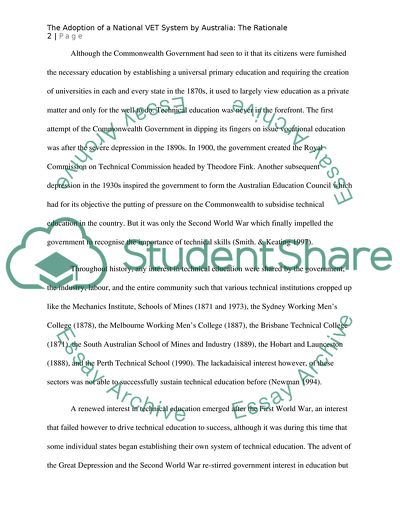Cite this document
(“The National VET System of Australia Essay Example | Topics and Well Written Essays - 2000 words”, n.d.)
The National VET System of Australia Essay Example | Topics and Well Written Essays - 2000 words. Retrieved from https://studentshare.org/politics/1716814-pdld381-context-of-workplace-education-and-training-2000words-essay
The National VET System of Australia Essay Example | Topics and Well Written Essays - 2000 words. Retrieved from https://studentshare.org/politics/1716814-pdld381-context-of-workplace-education-and-training-2000words-essay
(The National VET System of Australia Essay Example | Topics and Well Written Essays - 2000 Words)
The National VET System of Australia Essay Example | Topics and Well Written Essays - 2000 Words. https://studentshare.org/politics/1716814-pdld381-context-of-workplace-education-and-training-2000words-essay.
The National VET System of Australia Essay Example | Topics and Well Written Essays - 2000 Words. https://studentshare.org/politics/1716814-pdld381-context-of-workplace-education-and-training-2000words-essay.
“The National VET System of Australia Essay Example | Topics and Well Written Essays - 2000 Words”, n.d. https://studentshare.org/politics/1716814-pdld381-context-of-workplace-education-and-training-2000words-essay.


